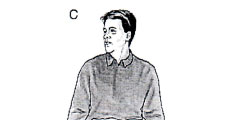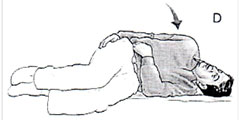Dizziness; A physiotherapy cure for many patients in a single treatment

BPPV (Benign Paroxysmal Positional Vertigo) is one of the most common causes of dizziness, affecting up to 50% of patients over the age of 70. The biomechanical condition is caused by the dislodgement of calcium carbonate crystals into a region of the inner ear with sensory organs, triggering vertigo. Physiotherapy can be remarkably effective in treating BPPV, and assessments are available in our physiotherapy practice.
The dizziness resulting from BPPV can be dramatically relieved by physiotherapists that use the forces of gravity to reposition the displaced calcium carbonate crystals to where they no longer disturb the sensory areas of the particular canals of the balance organs. Standard physiotherapy treatment uses a repositioning manoeuvre to move the crystals out of the semi-circular canal. Brandt Daroff exercises are frequently prescribed for patient self-management.
Let our skilled professionals be part of the treatment plan for you.
These exercises are designed to break up the material and unblock the canal. The exercises should be performed 3 times daily if possible. In the initial stages it is permissible to take anti-sickness medication if nausea is a problem. The symptoms of giddiness should be reproduced by the exercises if any benefit is to occur. If the exercises are done regularly, the symptoms should resolve over a period of several days in most cases.
A

Sit on the edge of bed, turn head slightly to the left (approximately 45 degrees).
B

While maintaining this head position, lie down quickly on the right side, so that the back of the head is resting on the bed. Wait for 20 to 30 seconds for any giddiness to resolve.
C

Sit up straight, again waiting for 20 to 30 seconds or for any giddiness to resolve.
D

Turn head slightly to right side and repeat sequence in the opposite direction.
Continue as above for 2 to 3 minutes.
Disclaimer: Richmond Physiotherapy Clinic accepts no liability for the result of performing these exercises without actual in–house personal demonstration. Readers may attempt these exercises but do so at their own risk. It is to be understood that these exercises do not in any way substitute professional treatment and Richmond Physiotherapy Clinic advises that you seek treatment and advice for any injury or musculoskeletal disorder as well as one–on–one instruction of these exercises for most effective results.













